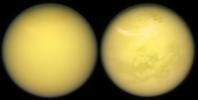
The Discovery of Titan: Christiaan Huygens and the Unveiling of Saturn’s Largest MoonThe year 1655 marked a monumental leap in the field of astronomy when Dutch mathematician, physicist, and astronomer Christiaan Huygens discovered Titan, the largest moon of Saturn. This discovery...